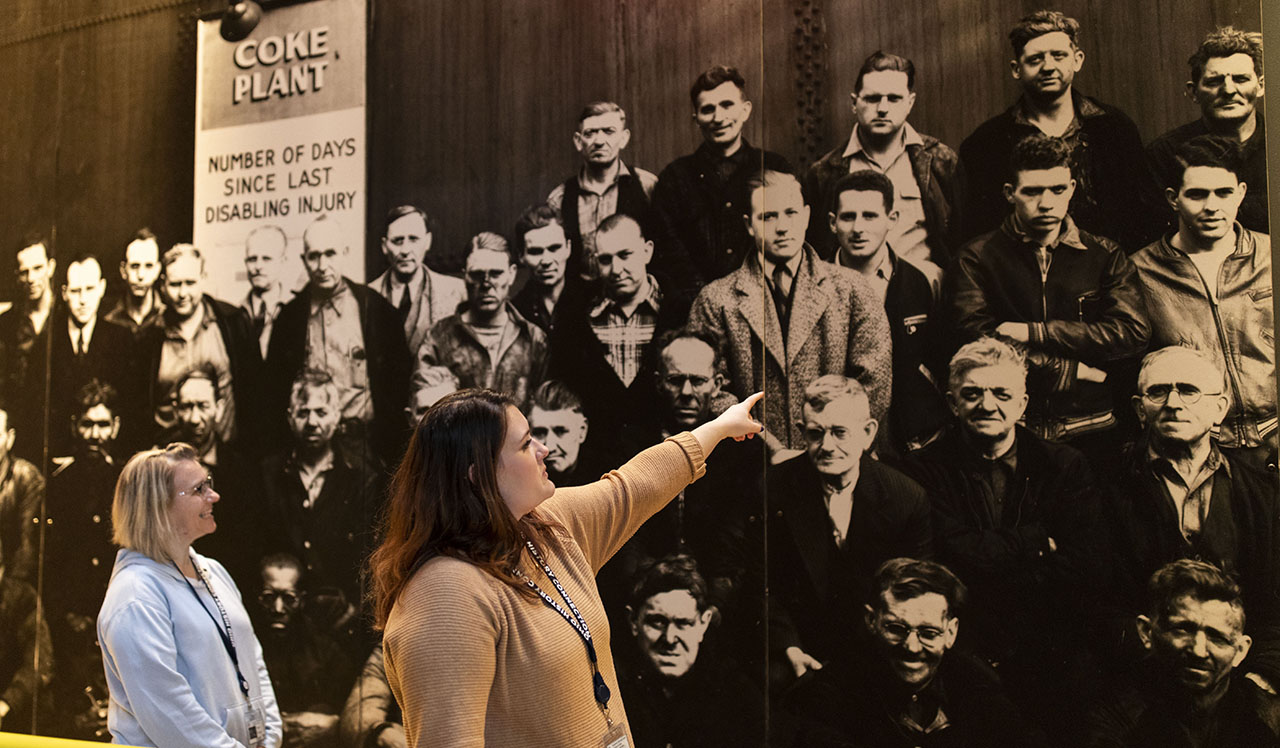
Hard work, doing a good job and making a better life for our community and ourselves
Youngstown’s Steel Museum
Here at Y magazine, we like to say, “There’s a story around every corner.” And, you know, there is!
But then there’s the place around the corner at Hazel and Wood streets on the far south end of the campus - the Youngstown Historical Center of Industry and Labor.
The building, designed by renowned architect Michael Graves to look somewhat like a steel mill (although you’ll need to use a good part of your imagination), bubbles over with stories about Youngstown’s proud steel-making heritage.
Take, for example, the display case with a cracked hard hat that was atop Steve Tkach’s head inside the Youngstown Sheet and Tube Campbell Works in 1972 when a chunk of iron plunged 20 feet onto it – most certainly saving Steve’s life.
Or the 600-pound mahogany desk on the museum’s lower floor, built for the first president of YST and last used by Stephen Muryn, son of a Ukrainian immigrant who served in World War II and, as YST’s chief engineer, used the desk until the company shuttered in 1977.
And there’s the unidentified girl in a wall-sized photo, wearing a white, lacey dress, gazing into the camera as she works in a company garden during the Great Depression of the 1930s, with the massive and smoking YST mill lurking as a backdrop.
From thousands of photos, rusty tools, old pay stubs, a mill locker room, a reconstructed company house, humongous multi-ton steel-making machines and countless other artifacts and memorabilia, flow the hard-scrabble stories of the rise and fall of iron and steel in the Mahoning and Shenango valleys.
“This place is a source of some pride,” Tom Leary, YSU associate professor of History, said about the center, better known as the “Steel Museum.”
“Of all the cities where steel once underpinned the economy, only Youngstown possesses such a tangible testament.”
Like the industry it exhibits, the museum has had its share of ups and downs since opening in 1992 under the leadership of the late Ohio State Sen. Harry Meshel, himself a former steelworker. Most recently, like the city it calls home, the center seems to be on somewhat of an upswing, attracting 7,000 visitors last year, up from about 5,000 the year before. (Editor’s note: The museum has been closed since March 14 due to the coronavirus pandemic.)
Part of that persistence can be traced to YSU. Owned by the Ohio Historical Society (now called Ohio History Connection), the museum has been managed by YSU’s Department of History for the past decade. Through expanded social media, increased community outreach, more inclusive programs, a push for more fund-raising and a variety of other initiatives, museum leaders believe the center is positioned to make an even greater impact in the years ahead.
“What I love about the museum is that it really tells a story about how we as a community have responded,” said Allison Henline, a YSU graduate student of History who works as an intern at the museum. “Yes, it’s about the decline of the steel industry, but it’s also about how we have bounced back.”
“And that is a story that so many people across the country can relate to,” added Marcelle Wilson, museum manager and History faculty member. “It’s a story of hard work, dedication to doing a good job and a commitment to making a better life for our community and ourselves.”
One of the museum’s newest exhibits neatly ties the past to the present and future. The exhibit traces the history of pipe making in the Mahoning Valley, from the early 1900’s to the construction and startup of Vallourec Star’s $1 billion state-of-the-art pipe rolling and finishing mill in 2013, located on the site of YST’s Brier Hill plant that closed in 1979.
The exhibit was developed by YSU students in a History class taught by Leary, a perfect example of how the museum provides a living laboratory where students in the university’s Applied History, Historical Preservation and Museum Studies programs get hands-on experience with museum operations and curation.
(Editor’s note: In addition to Henline, other GA interns at the museum are Susan Lowery, Mallorie Sutter and Jonathan Cambouris. Also interesting to know - The museum’s most famous visitor was Bruce Springsteen, who stopped by after a concert at Stambaugh Auditorium in January 1996 to promote a new album featuring the song, “Youngstown.”)
